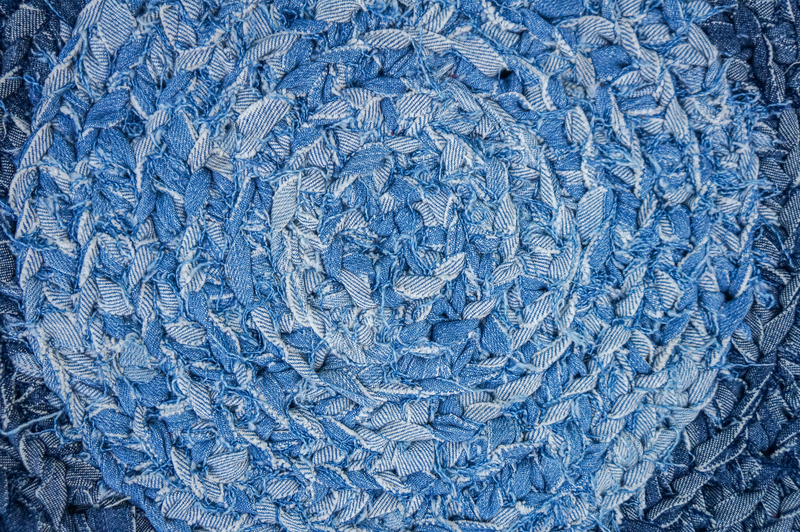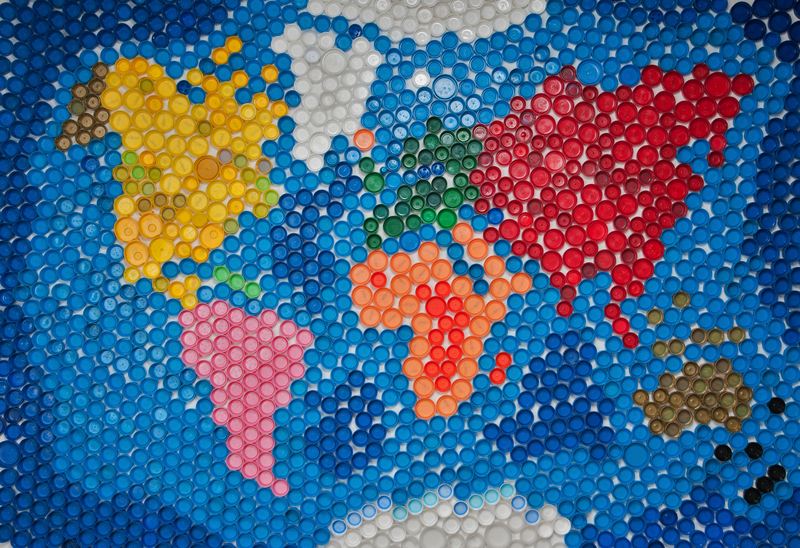Safe and Green Ways to Get Rid of PPE Waste at Home
The COVID-19 pandemic brought about an unprecedented rise in the use of personal protective equipment (PPE), such as face masks, disposable gloves, and face shields. While these items play a crucial role in safeguarding public health, improper disposal can wreak havoc on the environment and potentially pose health risks. Understanding the best practices for safe and green ways to get rid of PPE waste at home is now more important than ever. In this article, we'll walk you through effective, eco-friendly strategies for managing PPE waste, exploring why these actions matter and how you can contribute to a healthier planet from your own household.
Why Is Proper PPE Waste Disposal Important?
- Environmental Protection: PPE waste is predominantly made from plastics and synthetic fibers, which can take hundreds of years to decompose, leaching toxic chemicals into soil and waterways.
- Wildlife Conservation: Animals can mistake PPE items for food, leading to injury, illness, or death due to ingestion or entanglement.
- Public Health Concerns: Used PPE could be contaminated with pathogens, posing a direct threat to sanitation workers, waste pickers, and the community if mishandled.
- Reducing Landfill Pressure: By minimizing and properly managing PPE trash at home, you help lessen waste sent to already-burdened landfills.

Understanding PPE Waste: What's in Your Bin?
No article on eco-friendly PPE trash removal would be complete without identifying the most common household items:
- Face masks: Disposable surgical masks, N95 respirators, and sometimes cloth masks.
- Gloves: Latex, nitrile, or vinyl gloves used for hygiene or cleaning.
- Face shields & goggles: Often made from clear plastic or polycarbonate materials.
- Sanitary wipes and tissues: Single-use items, often not biodegradable, frequently used for cleaning.
Many of these products are non-biodegradable and can leach microplastics, which makes safe and sustainable disposal of PPE waste at home critical for long-term environmental well-being.
General Guidelines for Safe PPE Waste Management at Home
1. Segregation of PPE Waste
Never mix PPE waste with recyclables or organic waste. Keep used masks, gloves, and wipes in a dedicated, lined bin with a secure lid. This helps minimize direct contact and prevents contamination of other household waste streams.
2. Double Bagging and Sealing
For higher safety, especially if any PPE has been in contact with a sick person, double-bag the items to reduce leakage and exposure risks. Securely knot the bags or use ties. Consider labeling the bag as "PPE Waste" to alert sanitation workers.
3. Storing Used PPE Safely Before Disposal
- Keep PPE waste bins out of the reach of children and pets.
- Avoid compressing or squashing the contents to prevent air release.
- If possible, quarantine bagged PPE waste for 72 hours before moving it to the main external bin, as this reduces the risk of viral transmission.
Eco-Conscious Ways to Get Rid of PPE Waste at Home
1. Choose Reusable Options Wherever Possible
One of the greenest PPE waste solutions at home is simply to reduce single-use items:
- Cloth Masks: Use washable, reusable cloth masks instead of disposable ones. Wash them after every use with soap and hot water.
- Reusable Gloves: Non-disposable rubber gloves can be reused multiple times for cleaning purposes. Sanitize them thoroughly after use.
*Opting for reusable PPE directly reduces the waste you generate and is a major step towards sustainable living.*
2. Recycling PPE Waste: Is It Possible?
Most municipal recycling programs do not accept PPE waste due to contamination risks. However, a few innovative programs are tackling this challenge:
- Specialized PPE Collection Schemes: Check if local authorities or organizations like TerraCycle offer PPE recycling collection points in your area. These programs use specialized methods to break down plastics into reusable materials.
- Drop-Off Bins at Retailers: Some supermarkets, pharmacies, or hardware stores have initiated in-store mask recycling initiatives. Always follow their prep and drop-off protocols.
Note: Do not place used PPE in your curbside recycling bin unless explicitly instructed by your local recycling center.
3. Upcycling and Creative Reuse of PPE Materials
While not all PPE is suitable for upcycling, some plastic face shields and goggles can be cleaned and repurposed. Use them for:
- Craft projects (e.g., shield visors for kids' costumes)
- Garden protection (mini greenhouses for seedlings)
- Home repairs (splash guards for painting or DIY tasks)
4. Composting (For Biodegradable PPE Only)
Most commercial single-use PPE items, such as masks and gloves, are NOT compostable. However, if you use masks made from 100% cotton or biodegradable plant-based wipes, you may safely compost them in accordance with local guidelines. Always check packaging for compostability certifications before adding to your compost pile.
How to Safely Dispose of PPE Waste During a Pandemic
1. Use Lidded Bins and Marked Bags
When disposing of PPE after caring for a sick family member or in times of viral outbreaks, use clearly marked bags and dedicated bins. This ensures that the waste is visually identified and handled with increased caution by anyone who may come into contact with it.
2. Wash Hands Thoroughly
Always wash your hands with soap and water for at least 20 seconds after handling used PPE or touching the PPE waste bin. Use hand sanitizer if washing facilities are not available.
3. Avoid Littering or Open Burning
- Never throw PPE waste in public spaces, parks, or bodies of water.
- Never burn PPE. Incineration at home releases toxic fumes and microplastics, which are hazardous to health and the environment.
Alternatives and Innovations in Green PPE Disposal
1. Biodegradable and Compostable PPE
With growing awareness, manufacturers have started producing eco-friendly PPE alternatives, such as:
- Masks made from plant fibers or bio-based plastics
- Biodegradable gloves from natural latex or cornstarch compounds
- Compostable cleaning wipes
*Switch to these eco-conscious PPE items wherever possible to ensure that your actions align with a green-living mindset.*
2. Recycling Initiatives by Brands and NGOs
- TerraCycle: A global recycler that offers Zero Waste Boxes for discarded PPE at home. Fill the box and return it for responsible recycling.
- Local Community Drives: Some NGOs and municipalities organize periodic PPE waste collection drives. Stay connected with local events to participate.
Protecting Sanitation Workers: Actions You Can Take
Handling PPE waste with care isn't only about protecting the environment; it's also about respecting and safeguarding sanitation workers who deal with household trash. Here are tips to keep everyone safe:
- Seal the PPE waste bag tightly. Avoid overfilling bins, as torn bags increase risk.
- Clearly mark bags with "PPE Waste" using a sticker or label.
- Do not expose used PPE in open bags or pile it loosely on top of other garbage.
- Wash your hands before and after handling your waste bin, and clean bin lids regularly with disinfectant.
Frequently Asked Questions about Safe PPE Waste Disposal at Home
Can I recycle used face masks or gloves in my blue bin?
No. Most home recycling systems cannot process contaminated or mixed-material PPE. Only use designated PPE recycling services if available.
Are there any alternatives for eco-friendly PPE disposal if there's no recycling program nearby?
Choose reusable PPE whenever possible, and reduce overall use of single-use products. Store waste properly and support or encourage eco-friendly legislation in your community.
What should I do if my area offers PPE recycling?
Follow all preparation guidelines, such as separating items, cleaning them if required, and dropping them at the right collection points. Respect rules to maintain safety for all.
How can I tell if a piece of PPE is compostable?
Check the product's packaging for "compostable" or "biodegradable" certifications. When in doubt, opt for landfilling in a sealed bag, rather than risking contamination of home compost.
Simple Habits for Reducing Household PPE Waste
Minimizing PPE waste starts with conscious choices. Here are key habits to adopt in your day-to-day routine:
- Use washable masks and clean them regularly.
- Keep a set of reusable gloves for household chores.
- Educate family members about the importance of proper PPE disposal.
- Carry a small pouch for storing used masks or gloves until you're home.
- Support organizations and local laws promoting green PPE initiatives.

Conclusion: Making PPE Waste Disposal Safe and Sustainable
Practicing safe and green ways to get rid of PPE waste at home is a responsibility that begins with each individual. Segregate your PPE waste, dispose of it securely, and choose sustainable alternatives whenever you can. Even small changes--like opting for reusable masks or supporting eco-friendly innovations--make a huge difference when multiplied across millions of households.
The shift towards greener PPE waste management is not just an environmental necessity; it's a commitment to the health and safety of our families, communities, and future generations. Let's pledge to make thoughtful choices, spread awareness, and ensure that our protective gear doesn't cost the Earth.
Further Reading and Resources
Be a part of the solution--choose safe, responsible, and green ways to handle your home's PPE waste.
